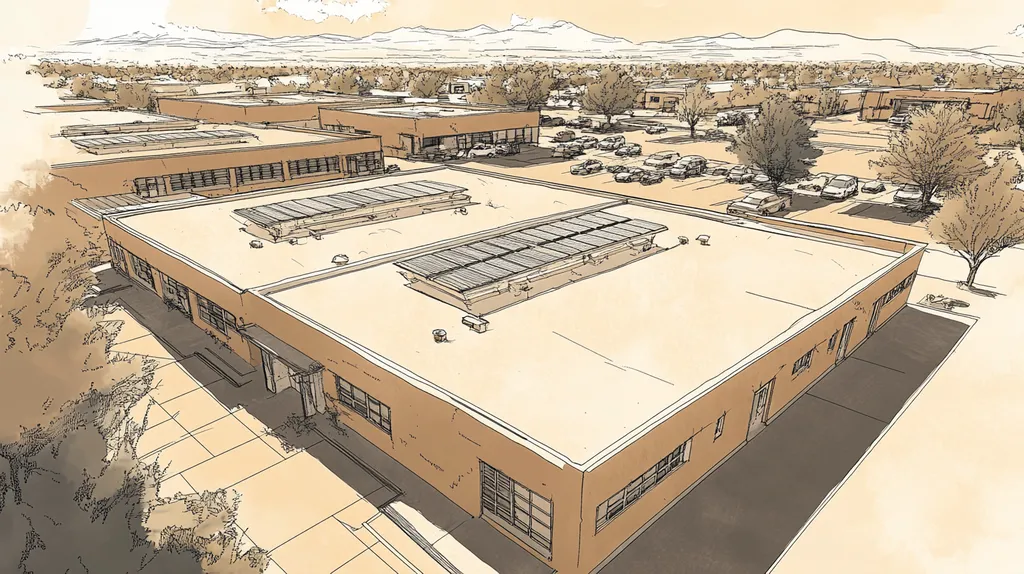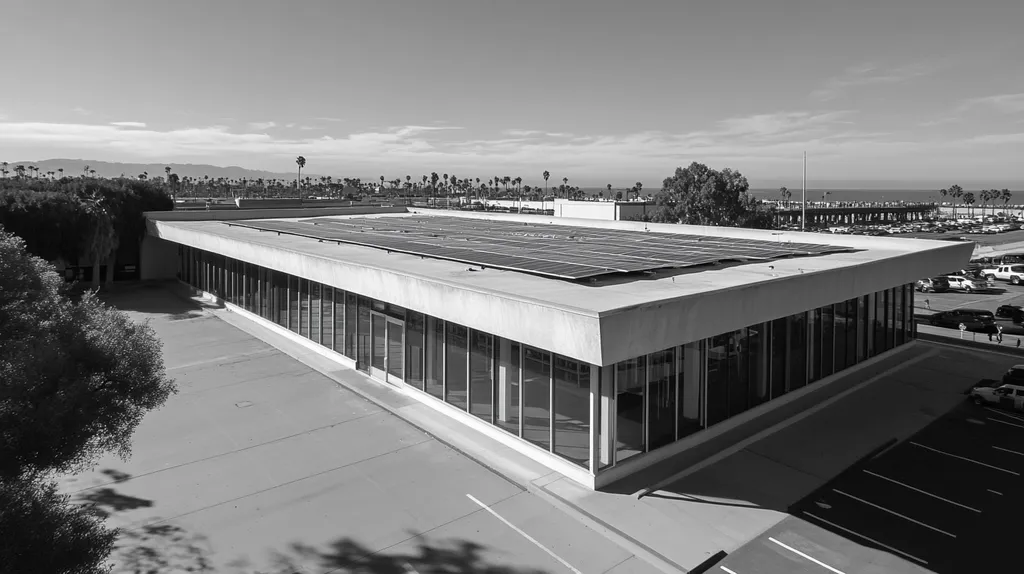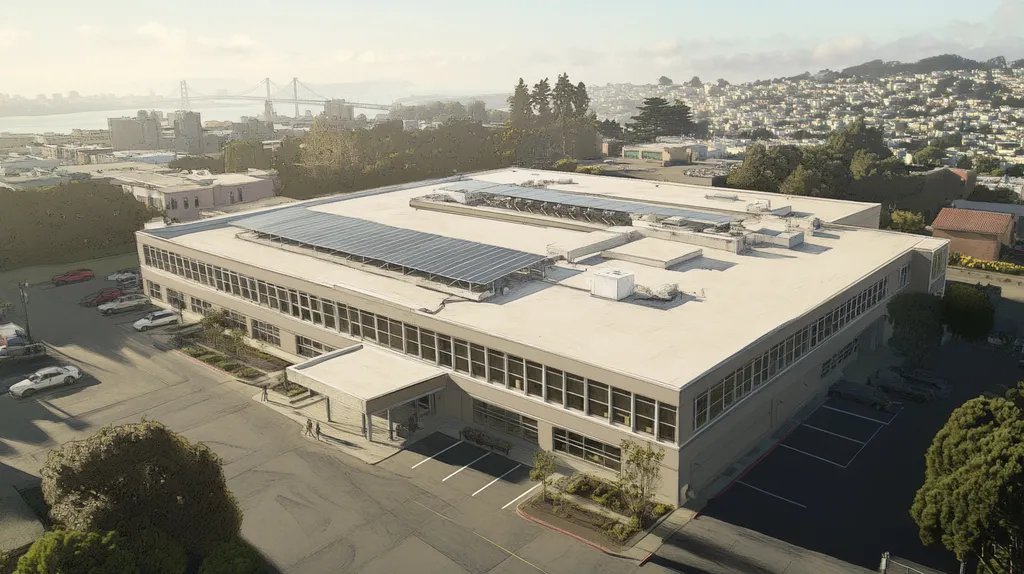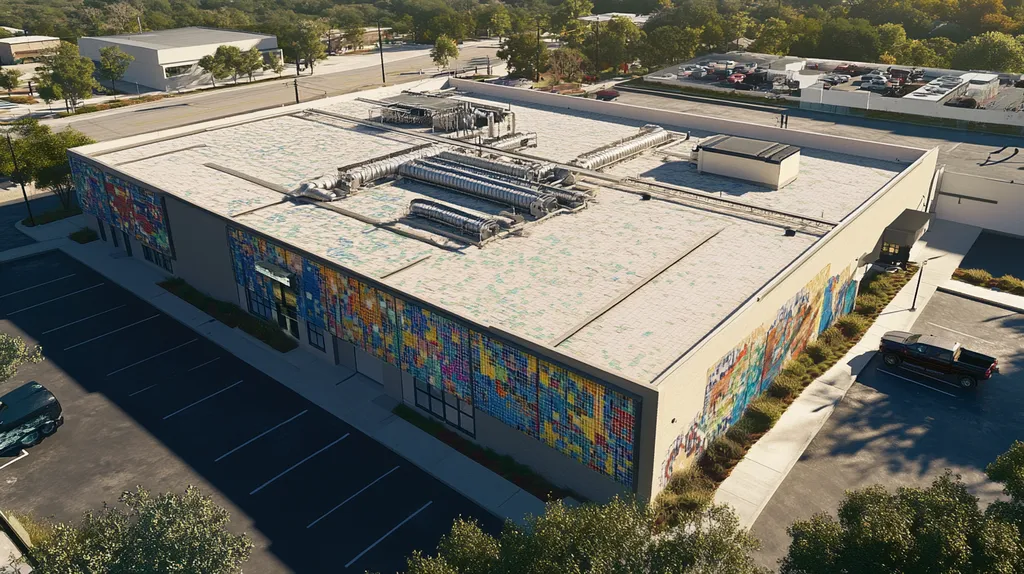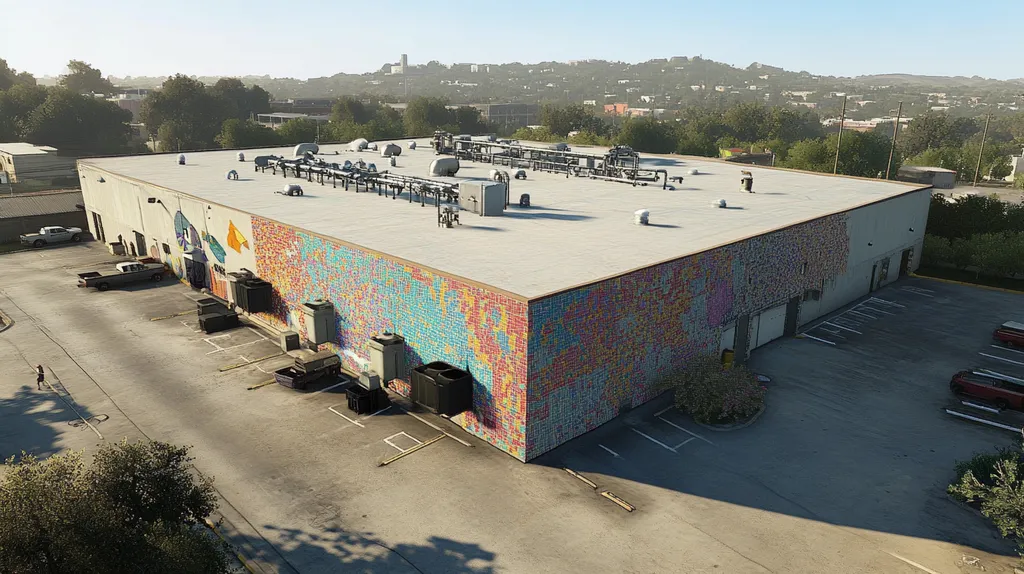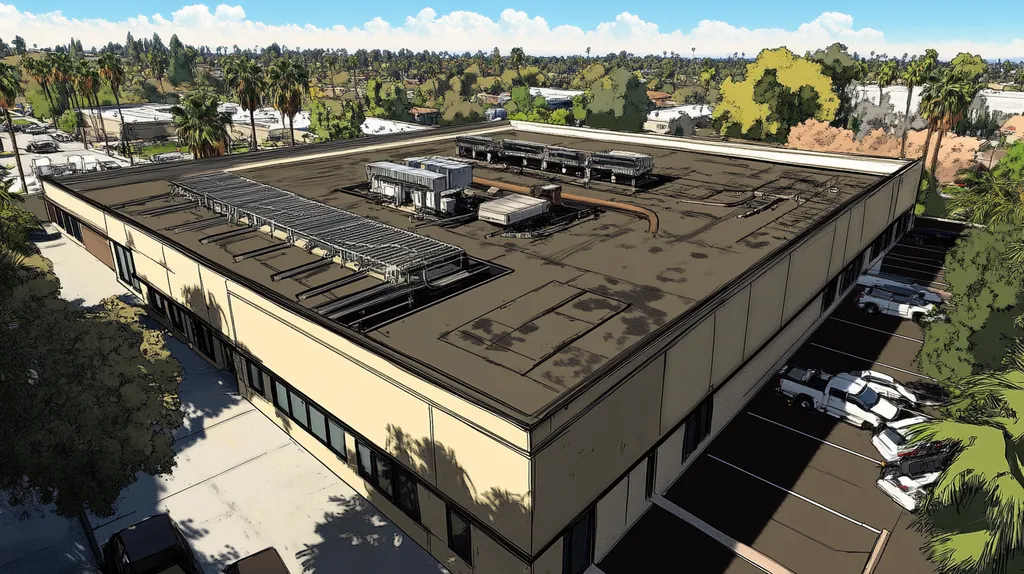Industrial roofing drainage stands at a critical juncture, with over 80% of commercial roof failures directly linked to inadequate water management systems. The financial impact is staggering – property owners lose millions annually to water damage that proper drainage could prevent.
While traditional drainage solutions have served industry needs for decades, emerging challenges from climate change and evolving building designs expose their limitations. From corroding materials to undersized systems, these established approaches increasingly fall short.
This analysis challenges conventional wisdom about industrial roof drainage, examining why trusted solutions may be contributing to, rather than solving, today’s most pressing water management challenges.
SECTION 1: CURRENT PRACTICES
The success of industrial roofs heavily relies on their drainage systems. When drainage fails, the repercussions can be severe — from leaks and structural damage to serious health risks caused by stagnant water. Alarmingly, studies show that nearly 80% of roofing failures stem from poor drainage. In this section, we will delve into the common materials and designs used in industrial roofing, the methods employed for installation, and the maintenance hurdles that property owners frequently encounter.
Common Materials and Designs
Industrial roofs are typically constructed using materials such as EPDM, TPO, and PVC, all celebrated for their robust durability. Yet, even the toughest materials can falter when it comes to drainage. Many roofs adopt low-slope designs, which can trap water in certain areas, creating unsightly pools. Designs like “saddle” and “curb” styles may be traditional, but they often fall short of effectively managing drainage.
The choice of roofing materials not only influences their lifespan but also dictates how well they handle drainage. A roof built with high-quality materials can still encounter drainage woes if it lacks proper slope or drains placed in the right spots. Without these considerations, water can linger after storms, leading to accelerated wear and reduced longevity.
Facilities that stick to conventional methods often presume that these materials are sufficient for standard environmental conditions. However, this assumption can lead to financial pitfalls down the road. By embracing smarter design strategies that prioritize drainage efficiency, property owners can save significantly while extending the life of their roofs.
Addressing drainage issues requires a thoughtful approach to material selection and innovative design. While some manufacturers are exploring integrated drainage solutions, widespread adoption is still lagging. The industry must not only innovate but also adapt faster to emerging challenges.
Installation Methods and Standards
The installation of industrial roofs follows established guidelines aimed at ensuring durability and quality. Standards from organizations like ASTM International serve as a foundation for best practices. However, many of these standards overlook the complexities of drainage, focusing instead on weather resistance and material integrity, which can result in inadequate drainage solutions.
In practice, some installers prioritize quick turnaround times and lower costs, possibly sacrificing optimal drainage layouts. Rushed installations can lead to misaligned drains and improperly graded surfaces, which can stifle water flow and harbor standing water. Without proper training, these shortcuts can spell disaster, resulting in increased risks of roof failure.
Moreover, it’s common for contractors to cling to outdated installation practices that do not meet today’s demands for industrial roofing. The current standards may not adequately address the rising challenges posed by heavier rainfall and shifting climate patterns.
To improve outcomes, incorporating drainage-focused best practices into installation protocols is essential. By enhancing education and updating guidelines, the industry can foster more reliable roofing systems and mitigate future liabilities.
Maintenance Requirements and Challenges
Ongoing maintenance is critical for avoiding drainage-related issues after an industrial roof is put in place. Regular inspections are vital, yet many facility managers don’t recognize the importance of frequent evaluations of drainage systems. A lack of oversight can allow minor issues to grow into major headaches, leading to expensive repairs down the line.
One of the primary maintenance challenges is debris removal from gutters and drains. Industrial sites often experience higher debris accumulation due to their setting and operations, making this task more difficult. Neglecting these areas can lead to clogs, exacerbating water retention and causing pooling that could have been easily avoided.
Additionally, many maintenance regimens tend to overlook drainage systems, focusing on other more visible roof elements. This oversight reflects a broader misunderstanding of how interconnected roofing components are, often resulting in avoidable damage and early failures.
New technologies for maintenance, like automated monitoring systems, could transform how drainage is managed, but acceptance in the industry remains slow. Bridging the gap between innovation and practice is essential for ensuring effective drainage in industrial roofing systems.
SECTION 2: SYSTEMIC ISSUES
Industrial roofs grapple with a series of systemic challenges that make effective drainage a daunting task. Poor drainage not only leads to troublesome water buildup but can also wreak havoc on a facility’s operations, resulting in pricy repairs and hazardous work environments. Alarmingly, inadequate drainage systems rank as a primary cause of operational disruptions in industrial settings. Therefore, addressing these systemic concerns is not merely advisable; it’s essential for preserving the roof’s integrity and longevity.
Inadequate Drainage Capacity
Many industrial roofs sport drainage systems that overlook the potential deluge of heavy rain or snowmelt. When these systems are ill-equipped, water tends to pool, raising the stakes for leaks and even roof collapses. This accumulation presents not just immediate annoyances but sets the stage for long-term structural challenges.
Worse yet, stagnant water creates a perfect breeding ground for mold and mildew, posing health risks for employees. Facilities with inadequate drainage may also attract unwanted attention from regulatory bodies if safety conditions fall short. Thus, upgrading to a more efficient drainage solution isn’t just wise; it’s crucial to mitigate these escalating dangers.
Determining the right drainage capacity requires keen insight into site-specific factors, including climate and roof dimensions. Investing in a comprehensive analysis can empower property owners to make informed decisions. Skipping this crucial step typically leads to recurring issues, which can quickly balloon into exorbitant repair costs.
In the end, the financial burden of maintaining a poorly drained roof far exceeds the investment needed for an effective drainage system. Prioritizing drainage capacity not only safeguards property but also protects the health and well-being of staff.
Corrosion and Durability Problems
Corrosion is a significant systemic issue that plagues industrial roofs, often a consequence of prolonged water exposure. Common materials — think metal gutters and drainage pipes — are particularly susceptible to rust when their drainage systems leave them hanging. This deterioration decreases the roofing’s lifespan, which can result in unexpected failures.
Moreover, the durability of roofing materials can also take a hit from subpar drainage. Many membranes and coatings are not designed for constant exposure to moisture. Continuous wetness can weaken seams and other structural components, leading to premature repairs or outright replacements.
Property owners may find themselves inundated with warranty claims due to these corrosion issues, illustrating the necessity of regular inspections. Identifying weaknesses before they escalate can save a fortune in repair costs. Proper maintenance extends the lifespan of both roofing materials and the drainage infrastructure.
To tackle corrosion and bolster durability, facilities should consider utilizing materials engineered for enhanced resistance. These long-lasting solutions not only defend against the elements but also ensure maximum efficiency in water flow.
Regulatory Compliance Gaps
Staying compliant with local and national regulations is critical for any industrial operation. However, aging drainage solutions can create regulatory gaps, with potential repercussions that include fines and legal issues. Many existing systems fail to meet current water management standards, risking non-compliance during inspections.
Regulatory bodies are increasingly focused on the environmental impacts of stormwater runoff from commercial facilities. Insufficient drainage systems are likely to come under scrutiny for contributing to polluted runoff, jeopardizing natural ecosystems. This pressure for compliance adds another layer of complexity for property managers.
Investing in up-to-date drainage solutions not only streamlines compliance but can also enhance a facility’s reputation. Demonstrating a commitment to environmental stewardship and employee safety puts a positive spin on audits.
However, neglecting these compliance gaps can lead to severe financial consequences and operational interruptions. Therefore, a meticulous evaluation of current drainage practices is essential for property owners aiming to secure their investments and meet regulatory requirements.
SECTION 3: MISSED OPPORTUNITIES
The stakes for industrial roof drainage are exceptionally high. When drainage solutions falter, businesses face the risk of costly water damage, premature roof deterioration, and operational disruptions. In fact, a staggering 80% of roof failures can be traced back to inadequate drainage. In this section, we will pinpoint crucial areas where the industry frequently misses the mark, including underutilization of advanced technologies, neglect of climate-specific needs, and the oversight of sustainable materials.
Overlooking Advanced Technologies
Despite the clear advantages, many property owners and facility managers don’t tap into advanced drainage technologies that can revolutionize the performance of industrial roofs. Integrated gutter and drain designs equipped with real-time monitoring sensors offer actionable insights to proactively prevent water accumulation.
For instance, smart drainage systems can automatically adjust to rainfall intensity, effectively curbing overflow during heavy storms. By disregarding these innovations, businesses miss out not only on potential cost savings but also on enhanced operational efficiency.
Moreover, traditional drainage methods often lack the necessary adaptability to accommodate evolving building designs. Advanced solutions can be tailored to fit specific roofing configurations, improving overall water management.
Embracing these technological advancements not only targets immediate drainage challenges but also reinforces long-term reliability. The industry’s shift toward integrating smarter solutions is essential for preemptively safeguarding against future complications.
Ignoring Climate-Specific Needs
Every region presents distinct climatic challenges that fundamentally shape roof drainage needs, yet many facilities remain oblivious to these influential factors. Local rainfall patterns, humidity levels, and temperature changes significantly affect effective drainage strategies.
For example, a facility located in an area prone to heavy rainfall requires a more robust drainage system than one situated in a drier climate. Overlooking these differences can lead to structural damage and escalated maintenance costs down the road.
Compounding this issue, climate change is introducing greater variability in weather patterns, making it essential to revisit drainage systems and strategies. Facilities must design roofs that consider not just historical weather data but also predictive analyses of future trends.
By prioritizing climate-specific needs, property owners can deploy effective drainage solutions that are well-suited for their unique environments. This strategic foresight not only mitigates damage but also enhances operational efficiency.
Neglecting Sustainable Materials
In today’s sustainability-conscious world, many industrial properties overlook the myriad benefits of using eco-friendly materials in their drainage systems. Oftentimes, traditional materials lead to subpar drainage performance and greater environmental repercussions.
For instance, utilizing permeable materials can significantly enhance water absorption and minimize runoff, aligning with contemporary sustainability initiatives while reducing ecological impact.
Furthermore, integrating recycled materials not only bolsters sustainability efforts but can also lower material costs and elevate public perception. Facilities that champion these practices earn favorable views from stakeholders, enhancing their reputation.
Despite these clear advantages, many organizations cling to outdated materials, squandering opportunities for innovation. Transitioning to sustainable options should be regarded not only as an environmental duty but also as a savvy business strategy that reaps long-term benefits.
SECTION 4: ROOT CAUSES
The challenges associated with drainage in industrial roofing are not just minor inconveniences; they represent significant risks that can lead to catastrophic failures. Nearly 30% of roof failures occur due to poor drainage, creating potential pitfalls for property owners. Ignoring the root issues behind these drainage dilemmas can result in costly repairs, operational interruptions, and serious safety hazards. In this section, we will unpack the fundamental factors that contribute to these persistent drainage problems.
Lack of Customized Solutions
Many industrial roofs fall victim to a one-size-fits-all mentality when it comes to drainage designs, ignoring the distinct characteristics of each building. Every facility is unique, with variations in size, shape, and location that dictate the need for tailored drainage strategies. By sticking to standardized approaches, property owners often encounter inadequate drainage that fails to manage water effectively.
This cookie-cutter methodology can lead to improper water flow management, resulting in unsightly pooling and even structural damage. For example, a flat roof subjected to heavy rainfall may desperately require strategically positioned drains, while a sloped roof could use completely different arrangements. A lack of adaptability in design becomes the breeding ground for chronic issues.
Moreover, leaning on generic solutions means missing out on technological advancements in drainage materials and systems. Properties that neglect customized designs may find themselves recycling the same costly problems, creating a vicious cycle that strains budgets and decreases property value over time.
Investing in tailored drainage solutions not only boosts performance but also extends the lifespan of the entire roofing system. Customized engineering can transform a roof into a resilient structure, well-equipped to contend with the challenges of nature.
Insufficient Training and Expertise
A major contributor to drainage issues is the inadequate training and expertise among roofing professionals. Effective drainage solutions require comprehensive knowledge of roofing systems and their relationship with water management. However, the industry’s training standards remain inconsistent at best.
Contractors lacking a strong grasp of best practices may deliver subpar installation and maintenance. Take, for instance, the lack of routine inspection and cleaning of drainage systems—this oversight can lead to blockages and overflow. Such gaps in expertise can compromise the integrity of the entire roofing structure.
Moreover, many facility managers may not possess the technical know-how to identify drainage issues accurately. This knowledge gap can result in poor decision-making regarding maintenance priorities, leading minor problems to escalate into significant failures.
To combat these issues, ongoing education and certification programs should be emphasized within the industry. Well-informed professionals yield better solutions and proactive strategies that tackle current and emerging challenges in drainage management.
Cost-Cutting Measures
Cost considerations often drive decisions that undermine effective drainage solutions. Many property owners opt for lower-cost materials or misguided approaches that may appear financially sensible but later prove to be costly mistakes. While saving money upfront is enticing, cutting corners rarely leads to long-term success.
For example, selecting inexpensive drainage materials might save cash in the short term, but these options are typically less durable and more prone to failure. This can result in leaks and subsequent damage, leading to expensive repairs sooner than anticipated. Studies suggest that skimping on drainage can double maintenance costs over the lifespan of a roof.
Furthermore, inadequate drainage designs can create liabilities, drawing regulatory scrutiny that may result in fines. Non-compliance with established industry standards can severely impact both a company’s bottom line and reputational standing.
Ultimately, investing in high-quality drainage solutions from the start can deliver significant savings by minimizing the likelihood of future issues. Property owners must carefully evaluate the balance between short-term costs and the potential for long-term losses.
DATA DRIVEN EVIDENCE
The reliability of industrial roofs is more than just a talking point; it’s critical for the seamless operation of manufacturing and warehousing. Data reveals alarming trends in drainage system failures, which can lead to costly repairs and significant operational downtime. As leaks and ponding become routine headaches, property owners face mounting expenses and risks that jeopardize asset value. This section dives into actual case studies, maintenance cost analyses, and performance metrics of alternative drainage solutions that can reshape industry standards.
Case Studies on System Failures
Recent investigations have uncovered severe failures in traditional drainage solutions across diverse industrial facilities. For instance, one large warehouse experienced extensive water damage after an established drainage system let them down during a heavy rain event. Operated for over a decade, the system faltered due to a lack of ample drains and poor positioning.
The aftermath? Over two inches of rainwater pooled on the roof, causing leaks and a disruption in operations that required thousands of dollars for repairs. Such incidents reveal a harsh truth: an overreliance on outdated drainage methods can jeopardize both efficiency and financial stability.
In another case, a manufacturing plant faced chronic standing water issues resulting from improper maintenance of its drainage system. A post-analysis revealed that a staggering 70% of its maintenance costs stemmed from recurring drainage problems. This case underscores an urgent need for reevaluation of traditional drainage systems across the industry.
These examples serve as cautionary tales, emphasizing that businesses need to critically assess their drainage practices to avoid similar pitfalls in their own facilities.
Statistical Analysis of Maintenance Costs
The financial strain of inadequate drainage systems on industrial roofs is staggering. A comprehensive statistical analysis indicates that companies typically incur an average of 30% more in maintenance costs when employing conventional drainage methods. Furthermore, prolonged water retention not only damages roofs but can also shorten their lifespan by 20%.
Data from several facilities illustrate that those transitioning to modernized drainage systems report a remarkable reduction in maintenance costs—up to 40% less over five years. This evidence makes it clear that investing in innovative drainage solutions could lead to significant financial savings.
On top of that, poor drainage can lead to operational interruptions that result in lost revenue. One study noted companies averaging two weeks of downtime annually due to roof leaks, a situation that spurs not just repair expenses but also diminished productivity.
Statistical evidence strongly suggests that while traditional methods may seem financially appealing at the outset, they tend to incur higher long-term costs, reinforcing the need for a strategy shift in drainage solutions.
Performance Metrics of Alternative Systems
Exploring alternative drainage systems reveals a strong case for change in industrial roofing practices. Innovative solutions, such as integrated channel drains and siphonic systems, show significantly improved performance metrics over their traditional counterparts. Research shows these alternatives can effectively handle increased water flow during heavy rain, boasting the capacity to remove up to 98% of accumulated water.
Facilities that have adopted these modern drainage systems report fewer maintenance incidents and higher reliability ratings. A recent survey highlighted that 85% of property owners noted a drastic decrease in water pooling problems, directly contributing to better overall roof health.
Real-world applications demonstrate that implementing these advanced drainage systems can extend roof life by up to 25%. Facilities embracing these cutting-edge solutions benefit from reduced operational risks and improved asset longevity.
These compelling performance metrics underline the necessity for industry stakeholders to consider alternative drainage methods. As the landscape of industrial roofing evolves, integrating proven solutions becomes essential for protecting investments and optimizing facility operations.
SECTION 6: ALTERNATIVE SOLUTIONS
The urgency to tackle ineffective drainage systems on industrial roofs is greater than ever. Poor drainage can wreak havoc, leading to costly water damage, structural dilemmas, and safety hazards. With a staggering number of industrial roofing systems failing to effectively manage rainwater, it’s high time to consider alternative solutions. This section explores innovative options designed to enhance drainage efficiency while slashing maintenance costs.
Siphonic Drainage Systems
Siphonic drainage systems present a game-changing approach to managing roof water. By employing the siphoning principle, these systems swiftly pull water off the roof with minimal slope, diverging from traditional gravity-fed solutions. This innovative design not only allows for smaller drain sizes but also reduces the number of outlets required, trimming both installation and maintenance costs.
These systems excel in high-volume water removal, which is particularly valuable during heavy rainfall, significantly lowering the risks of pooling and subsequent roof damage. Many industrial facilities that have adopted siphonic systems report up to 30% greater drainage efficiency compared to their conventional counterparts.
Beyond functionality, siphonic systems offer aesthetic benefits too. With fewer visible drains gracing the rooftop, buildings maintain a cleaner and more streamlined appearance while ensuring water is effectively managed. In spaces where every square foot matters, this drainage solution smartly optimizes usable roof areas.
In summary, implementing siphonic drainage systems tackles the pressing need for effective water management in industrial roofing and holds the promise of setting new standards in roof drainage.
Stainless Steel and Copper Alternatives
The quality of materials plays a crucial role in the performance of industrial drainage systems. To elevate durability and efficiency, property owners are increasingly turning to robust alternatives like stainless steel and copper. These materials not only resist corrosion and weathering but also ensure that drainage systems stand the test of time.
Stainless steel, known for its strength and resilience, can substantially extend the lifespan of drains, reducing the frequency of replacements. Meanwhile, copper’s aesthetically pleasing allure, combined with its natural antibacterial properties, aids in curbing debris buildup that can clog drainage pathways.
Both materials are adept at handling high flow rates, making them ideal for facilities located in regions prone to heavy rainfall. This enhancement in drainage capacity helps avert water-related damage efficiently.
Investing in stainless steel and copper alternatives pays dividends in the long run. As maintenance demands lessen, property owners benefit from a significantly reduced total cost of ownership for their roofing systems.
Integrated Roof Drainage Designs
Integrated roof drainage designs combine various drainage strategies into a single, harmonized system. This approach considers the roof’s topology, local climate, and specific building needs to craft a custom solution. By merging different methods, these designs effectively prevent water accumulation and facilitate efficient runoff.
For instance, integrating channel drains with scupper outlets creates a robust system that directs water to specific drainage points without overwhelming any single component. This synergy boosts reliability and minimizes the risk of failures during peak rainfall.
Adaptability is another notable advantage of integrated designs. Property owners have the flexibility to adjust their systems as necessary, whether in response to renovations or shifts in usage. This adaptability also paves the way for incorporating advanced smart water management technologies, further optimizing performance.
Ultimately, integrated roof drainage designs provide tailored solutions that enhance functionality and resilience, effectively safeguarding industrial roofs from water-related challenges.
Looking Ahead
The data is clear: over 80% of industrial roof failures stem from inadequate drainage, costing facility owners millions in preventable damage each year.
Traditional drainage solutions, while familiar, increasingly fall short of meeting modern challenges posed by changing weather patterns and evolving building designs.
The adoption of advanced technologies like siphonic systems and smart monitoring, combined with climate-specific engineering, could reduce maintenance costs by up to 40% while extending roof life by 25%.
As regulatory scrutiny intensifies and sustainability becomes paramount, the industry must embrace innovative drainage solutions or face mounting financial and operational risks.
The choice is stark: continue with outdated practices and accept preventable failures, or invest in modern drainage systems that protect valuable assets and operations.
FREQUENTLY ASKED QUESTIONS
Q. What are current practices for commercial roof drainage?
A. Current practices for drainage include using materials like EPDM and low-slope designs. While these are durable, traditional designs often trap water, risking severe structural damage. Emphasizing innovative strategies is vital to enhance drainage efficiency.
Q. What systemic issues affect industrial roof drainage?
A. Systemic issues include inadequate drainage capacity and the susceptibility of materials to corrosion. These challenges not only lead to pooling but also increase operational risks, necessitating a focus on tailored and efficient drainage solutions.
Q. How are missed opportunities affecting commercial roofs?
A. Missed opportunities like overlooking advanced technologies and climate needs hinder effective roof drainage. Utilizing outdated systems can lead to excessive costs and operational disruptions, ultimately compromising a property’s longevity and efficiency.
Q. What root causes contribute to drainage issues in industrial roofing?
A. Root causes include a lack of customized solutions and insufficient expertise among contractors. Generic designs often fail to meet the unique needs of properties, resulting in chronic drainage problems that lead to costly repairs.
Q. What does the data say about commercial roof drainage?
A. Data indicates that traditional drainage methods increase maintenance costs by 30%. Facilities adopting modern solutions experience an average of 40% savings, showcasing the urgent need for innovation in drainage systems.
Q. What alternative solutions exist for industrial roof drainage?
A. Alternative solutions include siphonic drainage systems and the use of stainless steel for durability. These innovations help manage water more effectively while reducing maintenance costs, crucial for maintaining the integrity of industrial roofs.
Q. How can regular maintenance prevent drainage issues?
A. Regular maintenance, like routine inspections and debris removal, is key to preventing drainage issues. By addressing minor problems promptly, property owners can avoid costly repairs and ensure the long-term health of their roof systems.

